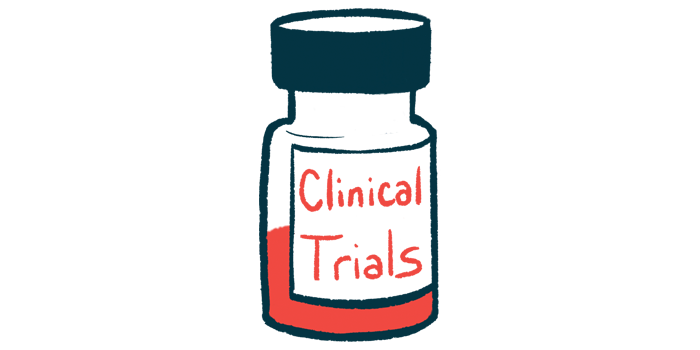P2B001 Shows Good Efficacy, Safety With Early Parkinson’s in Phase 3 Trial

A Phase 3 clinical trial assessing P2B001 in people with early Parkinson’s disease met its primary and a key secondary goal, with the investigative therapy showing superior efficacy to either of its two components, the approved medicines pramipexole and rasagiline, its developer, Pharma Two B, announced.
Top-line trial data also showed that P2B001 was well tolerated, and it was better at easing daytime sleepiness than the extended release formulation of pramipexole.
“We are thrilled with the positive outcome of this rigorous Phase III study. There is a clear unmet medical need for an early PD [Parkinson’s disease] treatment that can significantly improve motor symptoms and daily function, while avoiding side effects,” Sheila Oren, MD, CEO of Pharma Two B, said in a press release.
The company is planning to file a request for P2B001’s approval as a Parkinson’s treatment with the U.S. Food and Drug Administration in 2022.
P2B001 is a once daily, fixed-dose combination of extended release (ER) pramipexole (0.6 mg) and rasagiline (0.75 mg), both approved medicines for Parkinson’s motor symptoms marketed as Mirapex (pramipexole; 0.375 mg up to 4.5 mg) and Azilect (rasagiline; 0.5mg to 1 mg once daily) in the U.S. and Europe. Unlike the approved medicines, P2B001 does not need to be started with titrated (measured) doses.
Levels of dopamine are low in the brains of Parkinson’s patients, caused by the death of nerve cells (neurons) that specifically produce this neurotransmitter, a chemical that allows nerve cells to communicate.
Pramipexole is a dopamine agonist, a substance with similar properties to dopamine that can fulfill some of its functions in the brain. Rasagiline blocks monoamine oxidase-B (MAO-B), an enzyme that breaks down dopamine, and as such works to increase dopamine levels in the brain.
Both medicines have proven therapeutic effects and good safety profiles.
The double-blind Phase 3 trial (NCT03329508) enrolled 544 adults, ages 35 to 80, with early Parkinson’s — all within three years of diagnosis and not using disease treatments — at 70 centers in the U.S., Europe and Canada.
Patients were randomly assigned to one of four daily treatment arms: P2B001 as a fixed-dose capsule, a pramipexole ER capsule (0.6 mg), a rasagiline ER capsule (0.75 mg), or marketed pramipexole ER capsules titrated to a patient’s optimal dose (1.5 to 4.5 mg).
P2B001 was found to be superior to either pramipexole or rasagiline in easing disease symptoms, as measured by the change from the study’s beginning to week 12 in total Unified Parkinson’s Disease Rating Scale scores (sum of UPDRS Parts 2 and 3). Part 2 of the UPDRS measures the disease’s impact on daily life activities and Part 3 on motor abilities, and higher numbers indicate more severe symptoms.
Specifically, patients treated with P2B001 had a 2.66-point decrease in total UPDRS scores compared with those on pramipexole and a 3.30-point decrease relative to patients given rasagiline, the company reported.
P2B001 showed comparable efficacy with titrated pramipexole ER, with similar drops of -7.98 points and -8.35 points, respectively, in UPDRS scores after 12 weeks. Significantly less daytime sleepiness, a decline of 2.66 points on the Epworth Sleepiness Scale (ESS), was also reported in patients on P2B001 compared with those on titrated pramipexole ER, meeting a secondary trial goal or endpoint.
“The results demonstrated both superior efficacy to components and a more favorable safety profile than treatment with standard doses of pramipexole,” said Warren Olanow, MD, a professor emeritus at the Icahn School of Medicine at Mount Sinai in New York.
“If approved, P2B001 would enable patients to be treated with an effective dose of a dopamine agonist, yet with less adverse events often seen with this class of drugs, including daytime sleepiness, orthostatic hypotension [low blood pressure causing dizziness when standing up], and hallucinations,” Olanow said. “P2B001 has the additional advantage of once-a-day administration without the need for titration.”
Overall, P2B001 was well-tolerated by patients with 98% of the treatment-emergent adverse events being mild or moderate in severity, the company reported. Early treatment discontinuation rates were similar across patient groups.
“Importantly, these robust results are consistent with our prior pivotal double-blind placebo-controlled Phase IIb study of P2B001 in PD, which successfully met all primary and secondary endpoints,” said Jeffrey Berkowitz, chairman of the board of Pharma Two B.







